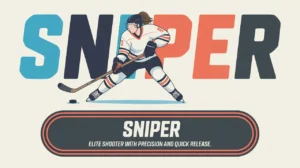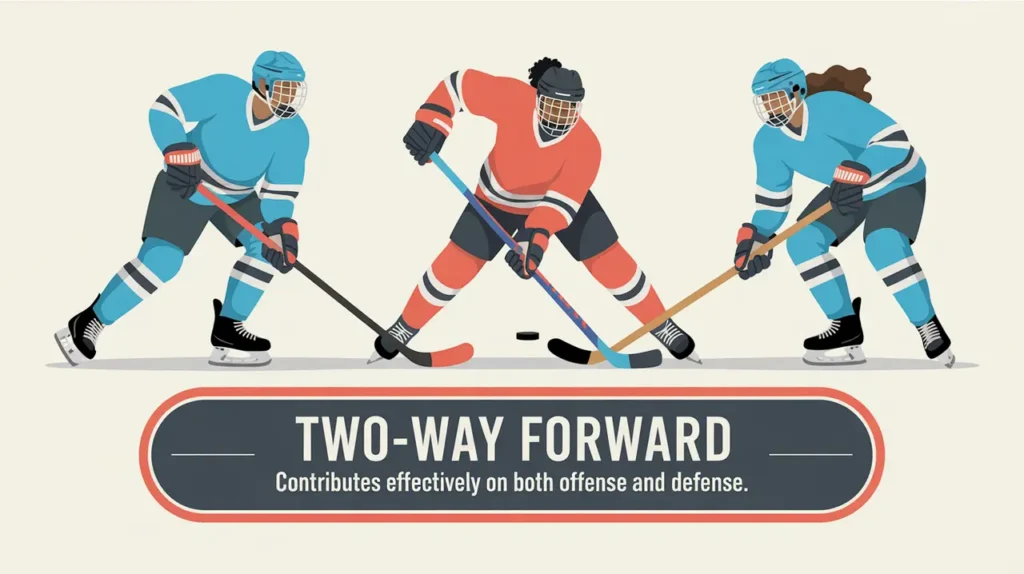Jim’s Intro to the Alternate Captain
Hi folks, Jim here, the only commentator who once tried to give a rousing locker room speech as “acting captain” in a rec game and accidentally motivated the other team instead.
What is an alternate captain?
An alternate captain, identified by the “A” on their jersey, is a key member of the team’s leadership core who supports the captain, acts as a liaison between players and coaches, and often takes on leadership duties when the captain is off the ice. Most teams have two alternates, though some carry three if they don’t have a designated captain.
Alternates are chosen for their influence, consistency, and ability to lead in action and communication, even if they’re not the official face of the team.
How does it work?
The alternate captain’s role blends support, leadership, and responsibility:
Supporting the Captain
- Alternates back up the captain’s messages in the locker room and on the ice.
- They reinforce team standards and keep communication flowing when the captain is engaged elsewhere.
On-Ice Leadership
- When the captain is off the ice (or if the team doesn’t have one), alternates are the designated communicators with referees.
- They step in to clarify calls, calm teammates, and maintain structure during heated moments.
Locker Room Influence
- Alternates often act as bridges between different player groups, including veterans, rookies, stars, and role players.
- They help maintain a balanced atmosphere, supporting younger players and ensuring the team stays unified.
Setting Standards
- Alternates lead through their play and work ethic.
- They model professionalism, reliability, and accountability, helping reinforce the team’s identity and values.
Filling the Gap
- If the captain is injured, out of the lineup, or unavailable, alternates share or assume leadership responsibilities both formally and informally.
Common Situations Involving Alternate Captains
- Captain Off the Ice: Handling discussions with referees or leading communication in key moments.
- Momentum Swings: Delivering big shifts, key hits, or settling the team after breakdowns.
- Locker Room Moments: Supporting the captain’s speeches, checking in on teammates, or quietly pulling someone aside.
- Special Teams and Key Situations: Often relied on during penalty kills, power plays, or critical defensive matchups.
- Leadership by Committee: Especially in teams without a captain, alternates share responsibility equally.
How do you make good decisions with it?
Good alternate captains rely on awareness, timing, and relational intelligence.
- Echo, Don’t Repeat: Support the captain’s message without overshadowing or contradicting it.
- Pick Your Moments with Refs: Communicate clearly and calmly, especially when tempers flare.
- Lead in Your Lane: Use your strengths, whether that’s vocal leadership, quiet example, or on-ice performance, to contribute meaningfully.
- Connect with Teammates: Build trust across the roster so your words carry weight.
- Stay Composed: Be the steady presence when games get chaotic.
How do you master it?
Mastering the alternate captain role requires self-awareness and consistent leadership. The best alternates understand their place in the team’s hierarchy and work to enhance, not compete with, the captain’s leadership. They show up every day with reliability, communicate effectively, and support the team’s goals without seeking the spotlight.
What does it look like when done right?
A great alternate captain is noticeable in subtle ways. When a call goes against the team, they’re calmly talking to the ref while the captain is on the bench. When a young player looks lost, they offer guidance without fanfare. In big moments, they deliver through effort, not speeches. They’re the teammate everyone respects because their actions match their words.
Commentator’s Corner
Jim’s Take
Alternate captains are like great rhythm guitarists. You don’t always notice them right away, but the whole band sounds better because they’re there.
Parent Tip
If your child wears the “A,” remind them that leadership isn’t about being second-best. It’s about being dependable and amplifying the team’s voice.
Player Tip
Being an alternate means being ready to lead from anywhere: beside the captain, in the corners, or during a crucial penalty kill. Consistency is your superpower.
A Final Thought
Alternate captains give leadership its depth. They support, steady, and strengthen the team’s core, proving that great teams aren’t led by one voice alone, but by a chorus of trusted leaders who keep everyone aligned.









